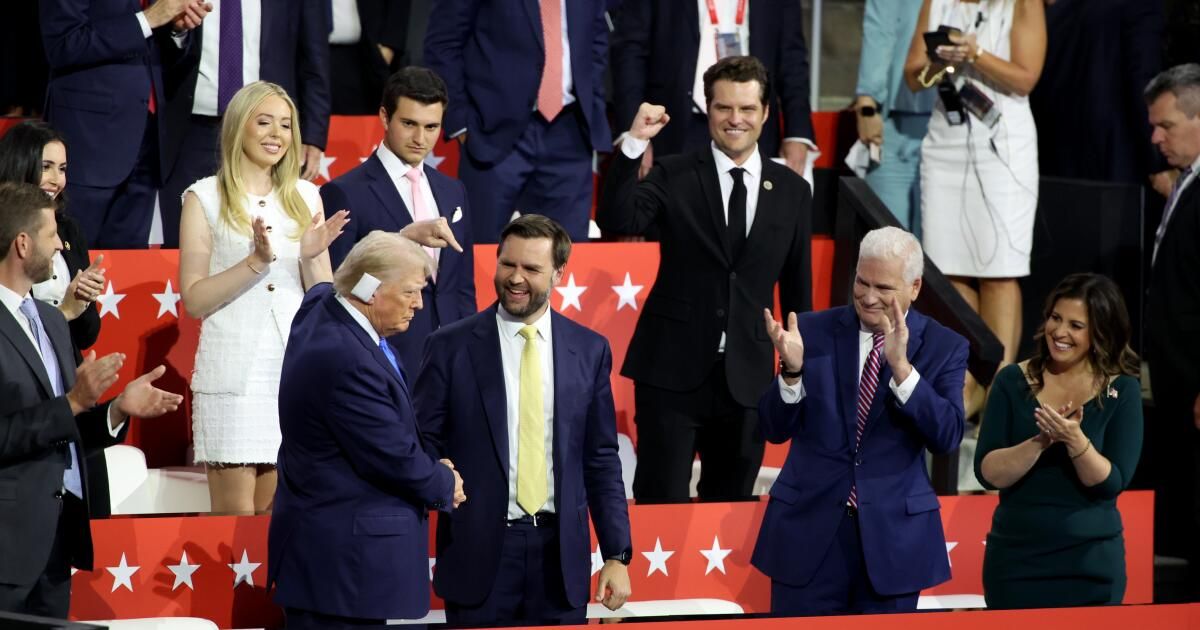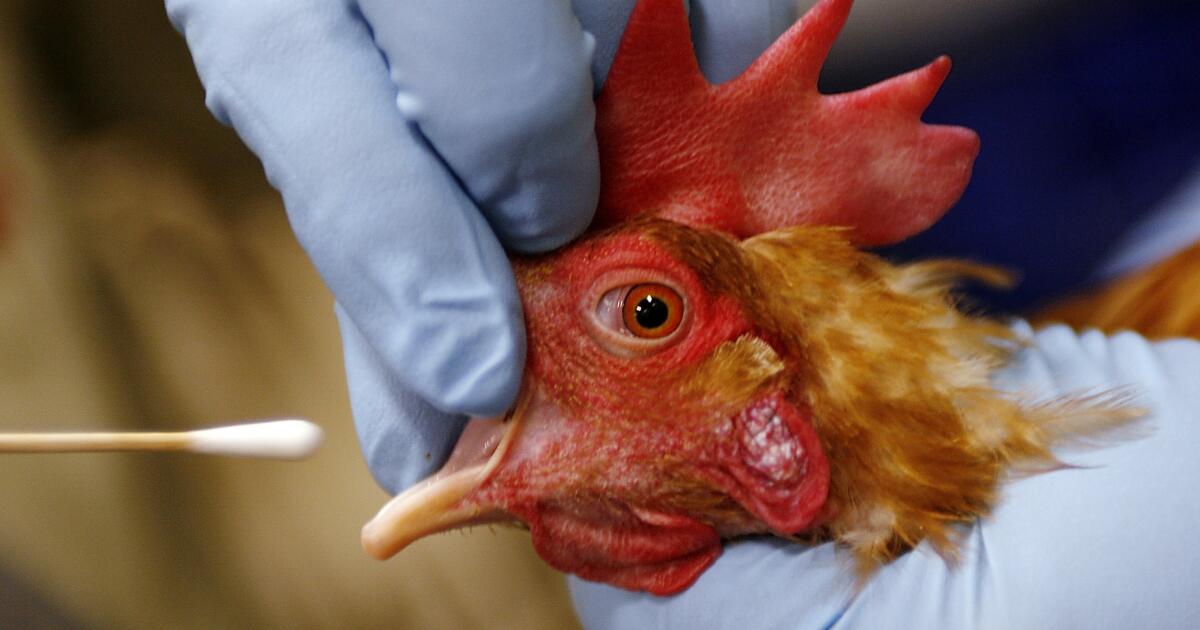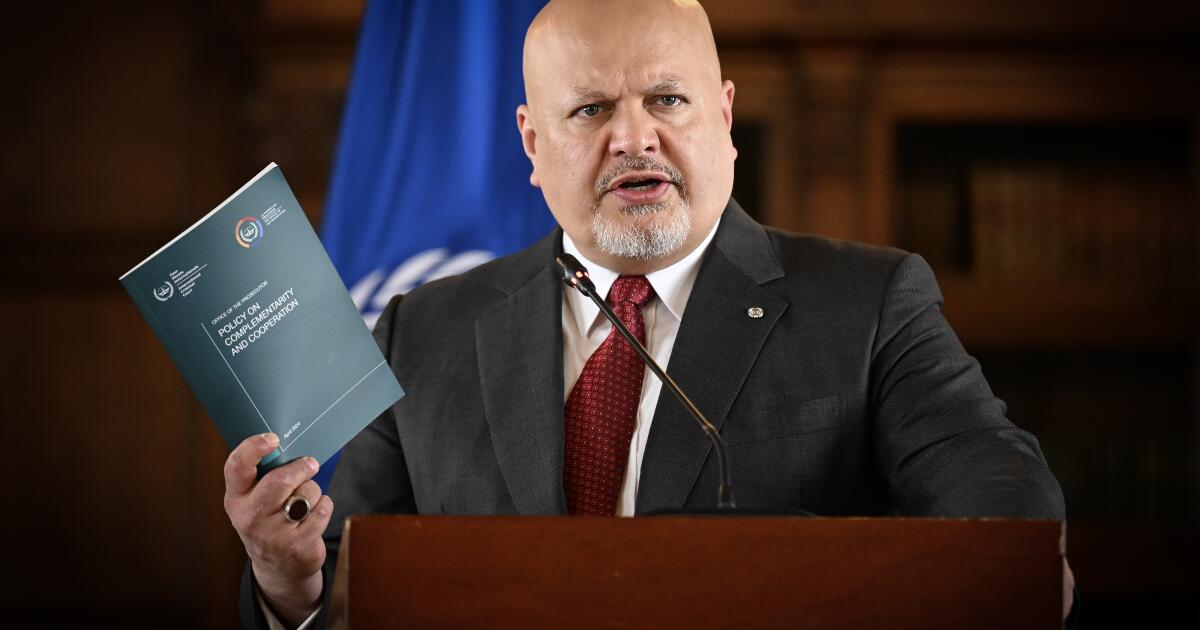Donald Trump couldn't contain himself.
The former president’s advisers had promised that his acceptance speech at the Republican National Convention would show a “softer” and more conciliatory Trump, and for perhaps 20 minutes, that was the case.
But for viewers who watched the full 92-minute program, which became a meandering list of false claims and hackneyed complaints, the lesson was that there is no New Trump. If anything, this year’s version of Trump is even more Trump than the last: He’s committed to cementing the Republican Party’s populist transformation for at least another generation.
Thus the Milwaukee Convention ended with its mission only half accomplished.
Political conventions are clumsy anachronisms, but they survive because they serve two purposes. First, they ratify a candidate's choice and unify and inspire party activists. Then, they take advantage of free television time to present their message to the uncommitted but persuadable voters they need to win.
This week’s convention confirmed not only Trump’s third nomination but also the enduring triumph of his grievance-based MAGA ideology over the rest of the Republican Party. It brought some skeptics who resisted the nomination, like former South Carolina Gov. Nikki Haley, back into the Trump fold (though she was booed) and produced a show of party unity.
Former U.N. ambassador Nikki Haley, who was Trump's main rival in the primaries, was one of several former foes who lined up behind the former president during the Republican National Convention this week.
(Robert Gauthier/Los Angeles Times)
But when it came to a message that could persuade suburban voters, women and others in the heart of the electorate that this year's Trump is an improvement over previous models, the convention fell short — a missed opportunity for a candidate who has never won more than 47 percent of the popular vote.
The first time Trump won the Republican nomination, in 2016, it was a hostile takeover by an insurgent with weak Republican credentials. Dissidents like Texas Sen. Ted Cruz and then-Ohio Gov. John Kasich warned that the New York real estate mogul was leading the party down a path of destruction.
The second time, in 2020, Trump's nomination was automatic, the traditional act of a party naming a sitting president.
This time, the convention made clear that the old Republican Party dominated by businessmen and the “country club” of Richard M. Nixon, Ronald Reagan and the two George Bushes no longer exists.
“Trump has reshuffled the parties in a way that hasn’t been done before,” said Geoffrey Kabaservice, author of “Rule and Ruin,” a history of modern Republicanism. “Almost all white working-class voters are going to be Republicans. Almost all college-educated voters are going to be Democrats,” a reversal of the norm for more than half a century. “That reshuffle is likely to last several decades at least.”
The most striking evidence is the choice of Ohio Senator JD Vance's candidate for vice president.
The 39-year-old populist was the most pro-Trump of the three finalists; North Dakota Gov. Doug Burgum and Florida Sen. Marco Rubio both had roots in the party's pre-Trump establishment.
In his convention speech, Vance made clear that, like Trump, he blames old-school Republicans like the Bushes for the nation's ills as much as Democrats.
“From Iraq to Afghanistan, from the financial crisis to the Great Recession, from open borders to stagnant wages, the people who run this country have failed and failed again,” he said.
Vance’s selection may have partly reflected electoral strategy: It could help the ticket win votes among white working-class voters in the key states of Wisconsin, Michigan and Pennsylvania, but it was also a sign of the direction Trump wants the party to take in 2028.
“Vance is a generational play, not an electoral one,” said Democratic strategist David Axelrod.
In a second Trump administration, Vance would act not as a restraining influence, as Burgum or Rubio might have done, but as an enhancer of Trump’s populist instincts.
Vance has been more explicit than Trump in his desire to immediately end U.S. aid to Ukraine. “I really don’t care what happens to Ukraine, one way or the other,” he said in 2022.
Interestingly, Vance has distanced himself from Republican orthodoxy (and Trump's positions) on several economic issues. He has said he does not believe corporate tax cuts, a key part of Trump's agenda, are necessary and has suggested he might support a $20 minimum wage, something most business leaders find abhorrent.
Some of the most interesting battles of a second Trump administration could center on those issues.
“What we have in this formula is a strange amalgam of plutocratic populism,” Kabaservice said. “It is incoherent and inconsistent. It is not clear which parts Trump has signed on to. After all, which part of his agenda is most likely to pass? I think the answer is big tax cuts for corporations.”
Trump's acceptance speech was also a strange amalgam: between the kinder, gentler candidate his aides had hoped to portray and the angry, resentful candidate he has been for much of the past decade.
On Thursday morning, his daughter-in-law Lara Trump, the Republican vice chairwoman, promised the acceptance speech would reveal “a slightly softer version” of the candidate, who she said had been deeply affected by his brush with death after being wounded in an assassination attempt by a gunman.
But after a lengthy description of the assassination attempt and a brief call for national unity — “We must not criminalize dissent or demonize political disagreement,” Trump said — he turned to demonizing President Biden and other Democrats, including “Crazy Nancy Pelosi,” accusing them of “destroying our country.”
As it turned out, Trump’s definition of “unity” did not include mutual respect or bipartisan cooperation, but rather boiled down to accepting his policies and abandoning all federal lawsuits against him.
“If Democrats want to unify our country, they should stop these partisan witch hunts,” he said.
Most of the speech — which largely deviated from his written text, as Trump often does — was a rehash of his greatest hits from his stump speeches. It included a torrent of false claims, accusations and another admiring mention of the “great deceased fictional cannibal,” Hannibal Lecter. The only sign of restraint was that this time he did not use the word “vermin” to describe his political opponents or promise to prosecute them if he won the White House.
Had he succeeded in the change of tone that his aides sought to broaden his appeal, he might have paved the way for his party to win a popular vote and control of the House and Senate, but his speech likely kept alive the doubts many voters have about his suitability for office.
And it gave Democrats an opportunity they can seize, but only if they can elect a candidate of their own.












